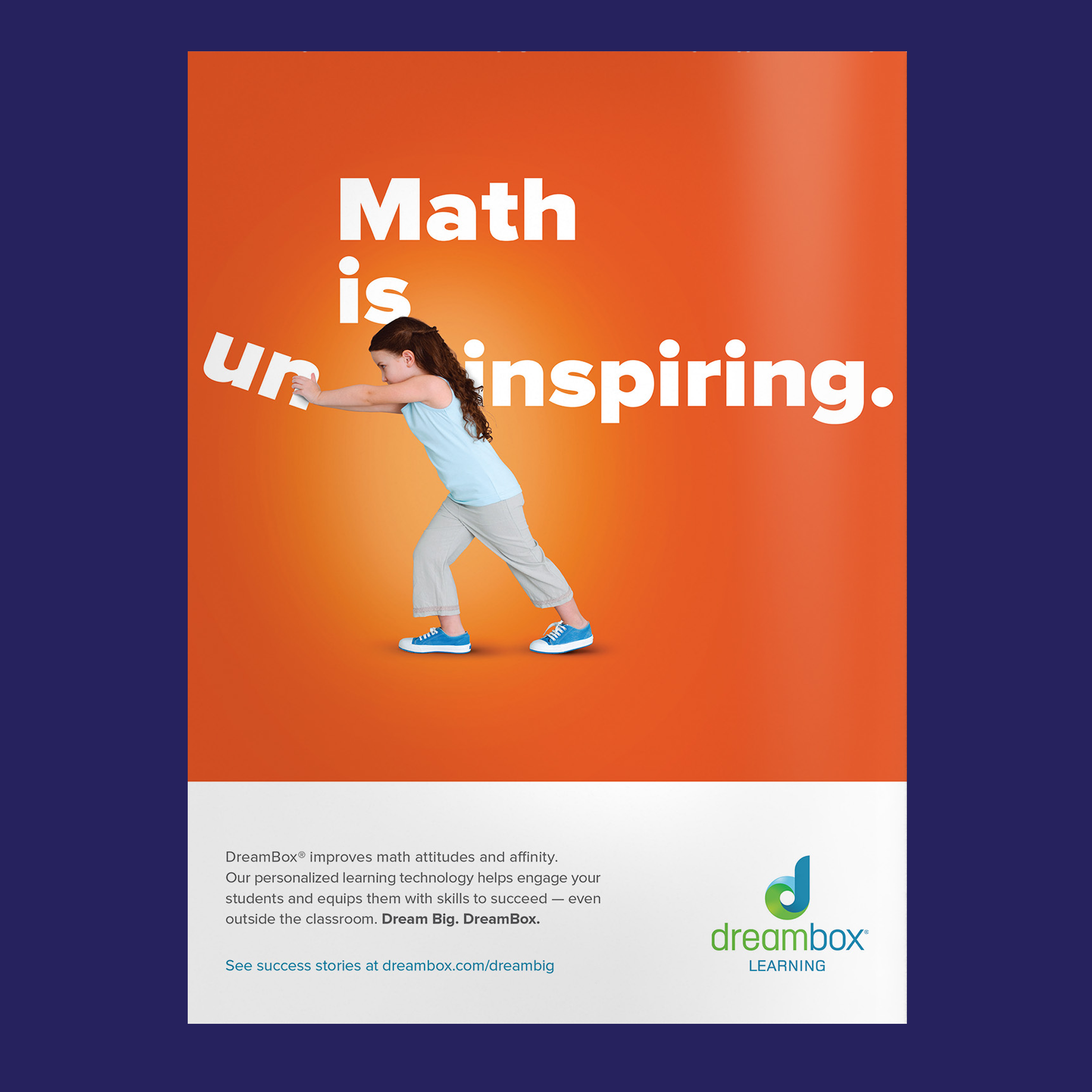What does it mean to design with empathy?
For me, it starts with remembering that I’m not the audience. It sounds obvious, but it can be hard in practice to design this way. It forces me to understand the people I’m trying to reach before I start creating. Walk in their shoes a bit. Find out what motivates them, what their needs are, what they believe and why they feel that way. That’s empathy.
When I understand who I’m designing for, I can tailor a message that speaks directly to them. This is when work can truly connect on a human level between brand and audience. It’s not always about shouting the loudest or getting the most attention. Whether it’s a campaign, a website or a brand identity, empathy can guide the choices that make a brand feel real and meaningful.
This approach shaped a campaign I led for DreamBox Learning, a K–8 math education platform that wanted to expand its presence in schools. The ads didn’t lead with software features or math score results. The campaign instead centered around the students themselves. Students who had a fundamental shift in attitude towards math, from frustration to confidence and pride.
The work ran across print and digital, under the theme “Dream Big. DreamBox.” A simple idea built on understanding, positivity, and heart. It reminded everyone what the brand stood for and why it matters.
Creating brands that connect is what I do, and empathy is one of the ways I get there. Understanding the audience, thinking strategically, and designing thoughtfully makes the work feel real, not forced. Design that looks great, but speaks even better.




